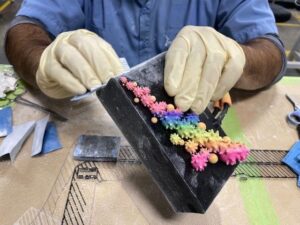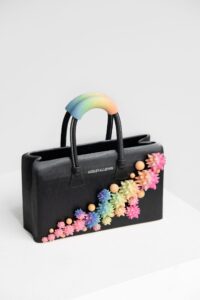How 3D Printing Could Help Alleviate the Leather Crisis in Fashion – My Journey 3D Printing a Purse with Stratasys Direct
Have you ever had an idea met with this response: “Oh this is just one of your big, crazy pipedreams”? Or, “This idea is stupid.” Or, “You’ll never be able to achieve this.”
Well, these statements pushed me even further to accomplish a dream I had to help alleviate the amount of leather wasted in the fashion industry. While the journey was a difficult one, I ultimately got to achieve that goal by collaborating directly Stratasys on a 3D printed handbag.
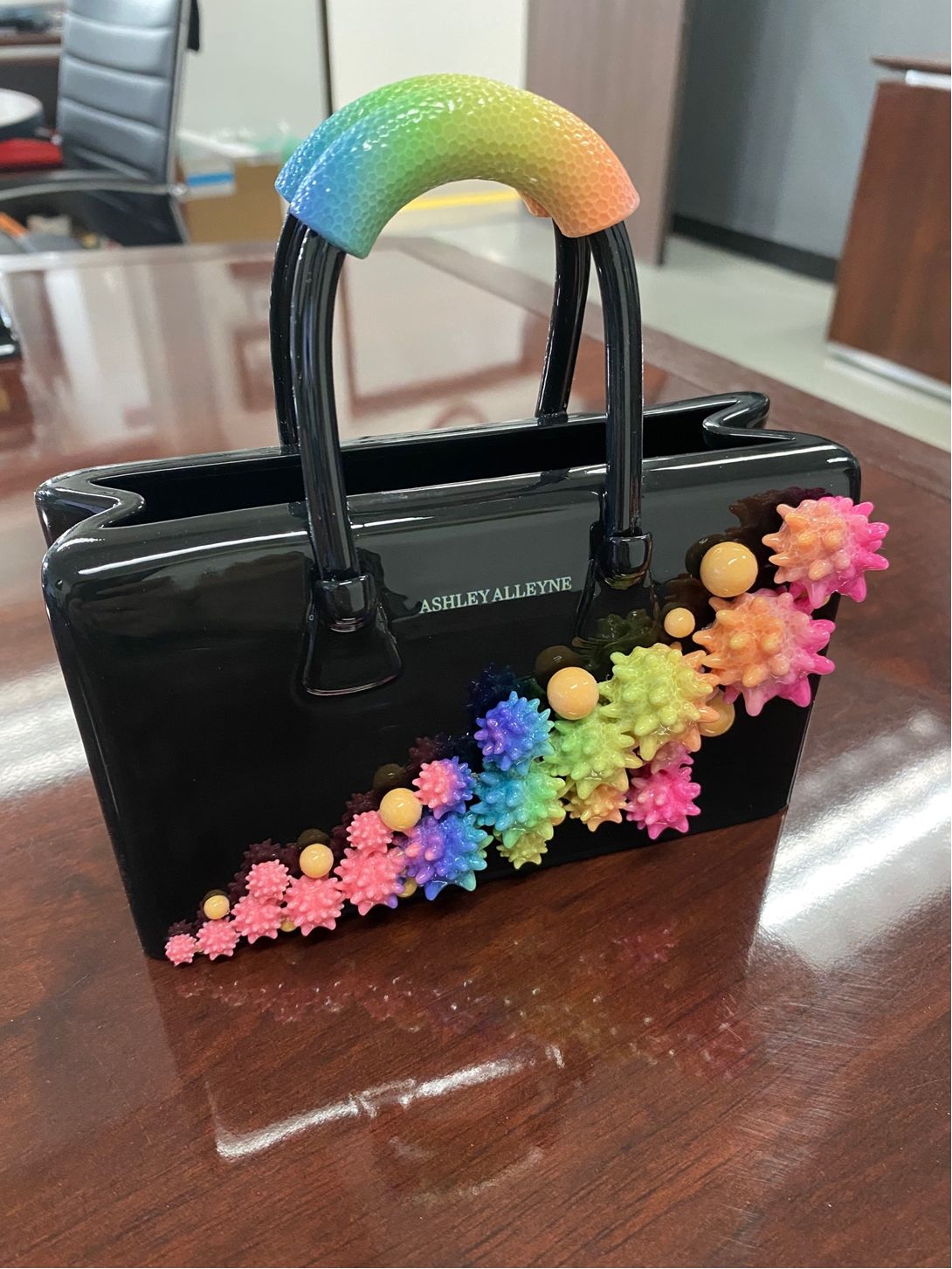
My name is Ashley Alleyne, and I’ve worked for the top fashion brands in the world as a 3D printer operator, 3D designer, and independent design consultant. By telling the story of how I 3D printed a purse using Stratasys PolyJet, I hope to inspire others facing adversity in their own lives.
Leather Sampling is Inherently Wasteful
Throughout my career, whether my position was on the 3D printing side or the 3D modeling side, my role was rooted in prototyping. While there were some perks, the territory came with a lot of negatives, like seeing firsthand how much leather is wasted in the fashion world, especially throughout the handbag sampling process.
This article is not geared towards a specific company, but is based on fashion industry standard practices. No matter what: if we’re talking about creating a handbag, watch, or even kitchen utensils, multiple prototypes are required to get to the final product. In turn, in terms of industry standards, it takes multiple leather handbag prototypes, or samples, to obtain a final item. And I can’t necessarily say where the leather ends up, but I can say it’s nowhere good.
Also, again as an industry standard practice, the final handbag design might not even be brought into production. This means that all that leather literally went to waste.
Again, (as an industry standard practice) regardless of whether we’re talking about leather handbags, forks, or hats, many of these samples are also imported from countries overseas when they’re not made in-house. This also adds to a company’s carbon footprint. In other words, the sampling process is not only unsustainable in terms of leather waste but shipment as well.
My Introduction to Stratasys PolyJet
A few years ago, one fashion house asked my opinion on the Stratasys J850. Just my opinion. However, knowing how I am, I wrote a nine-page white paper on everything you can do with the printer. When I was doing research, I came across a Stratasys sample part: a gear shift for a car that had a sliver of 3D printed “leather” on it, with stitches.
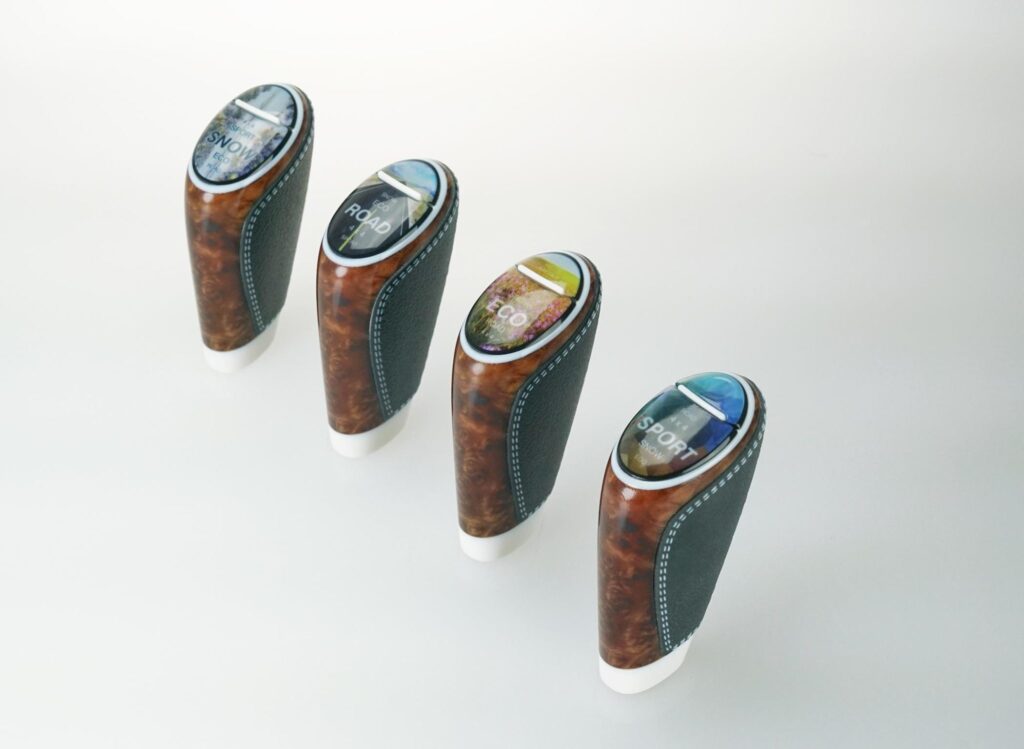
3D printed gearshifts made with the Stratasys J750. Image courtesy of Stratasys
From there, I hypothesized that it was possible to 3D print a handbag using the same leather, and prototype handbag designs with the same technology so as to not use actual leather. We were researching how to make this idea I had a reality, but, unfortunately, it is common that ideas tend to get scrapped or just fizzle out, and that’s what happened with this one.
Facing Rejection
A few months later, every fashion brand was getting called out by industry experts, activists, and Gen Z for the amount of leather wasted in the industry. And they all started scrambling to figure out how to make an alternative leather. However, most fashion brands don’t have biochemists in-house so they would outsource other design firms to create or use an already existing material.
During a meeting to go over alternative leathers, I again proposed the idea of 3D printing the handbag designs using Stratasys PolyJet technology, to avoid the use of actual leather. Moreover, it’s possible to easily manipulate or modify the bags in 3D software instead, making it even more sustainable.
Do you know what I was told in response? “Oh, this is just another one of your big ideas Ashley,” extremely sarcastically. “Huh?” I thought. My heart sank. My mind went blank. I froze.
I was confused. We were just spending so much time researching if we could make my idea a reality. What happened?
Unfortunately, it didn’t really phase me. I became immune to it. I faced so much racism, sexism, and misogyny throughout my career that this was just a regular, old Thursday to me.
But sustainability is really important to me. And, after seeing the potential of 3D printing to alleviate the amount of leather wasted in the fashion industry, I couldn’t just give up on this idea.
Working with Stratasys
Around the same time, I was fortunate enough to attend a 3D printing event that featured designers Julia Koerner, ThreeASFOUR, and Travis Finch, in which they discussed their 3D printed clothing collaborations with Stratasys. I was so inspired and in awe that I vowed to myself that I would work with Stratasys one day.
Fast forward to 2022 and Maricarmen Senosiain from Stratasys Direct Manufacturing was reaching out to me on Linkedin about the possibility of designing a handbag for 3D printing on a Stratasys PolyJet machine. I met with her and other members of Stratasys Direct Manufacturing, including Amanda Hallock, Cynthia Osbron, and Ryan Nelson. Everyone including myself was extremely enthusiastic and excited about the project. I have to be honest: I almost cried on the call. Collaborating with Stratasys had been my dream since I was in 3D printing school.

Original 3D model courtesy of Ashley Alleyne
When making this bag, I was inspired by nature, sea urchins in particular, and how beautiful and delicate they are. Despite their beauty, you aren’t actually able to touch them. So, I created this asymmetric voronoi sea urchin bag with voronoi pearls, on top of black 3D printed “leather”. And I created a rainbow gradient pattern to color the voronoi pieces and the handle. Why? Because if I’m going to use a Stratasys PolyJet printer, then I’m going to push the design to the max to show everything the printer (and myself) can do.
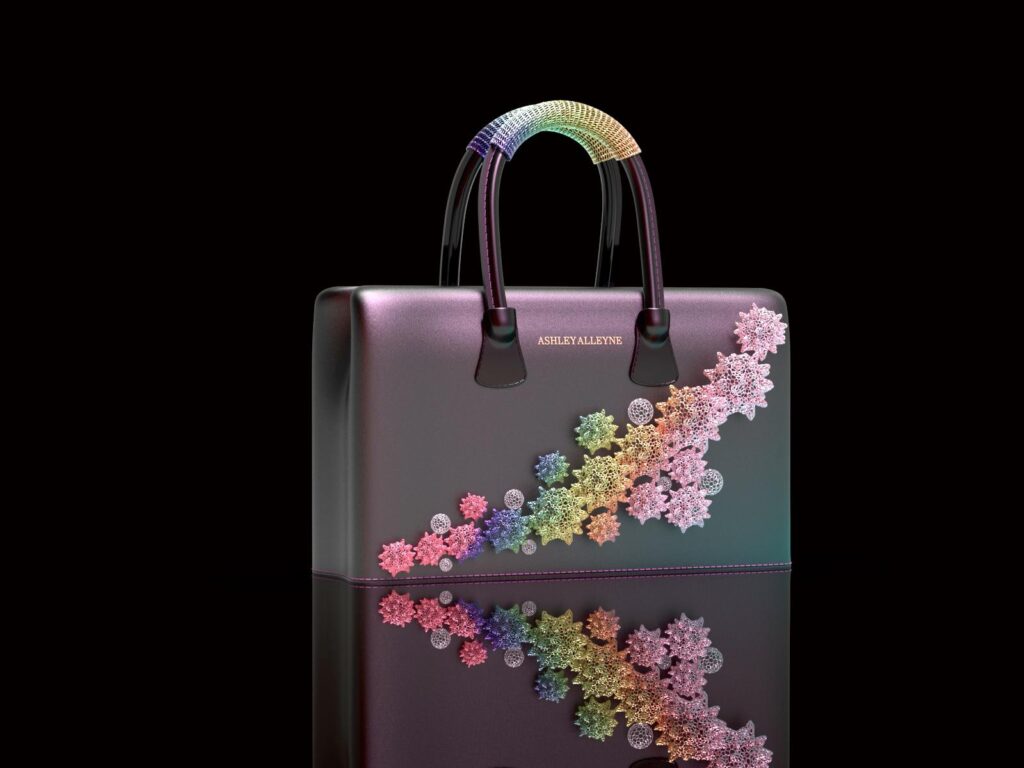
First model and concept courtesy of Ashley Alleyne
I designed the bag in under three hours. I quickly made a napkin sketch of the bag, and then modeled it in 3D using an assortment of different software (I am proficient in 19 of them). Then I rendered it and sent everything over to Stratasys Direct.
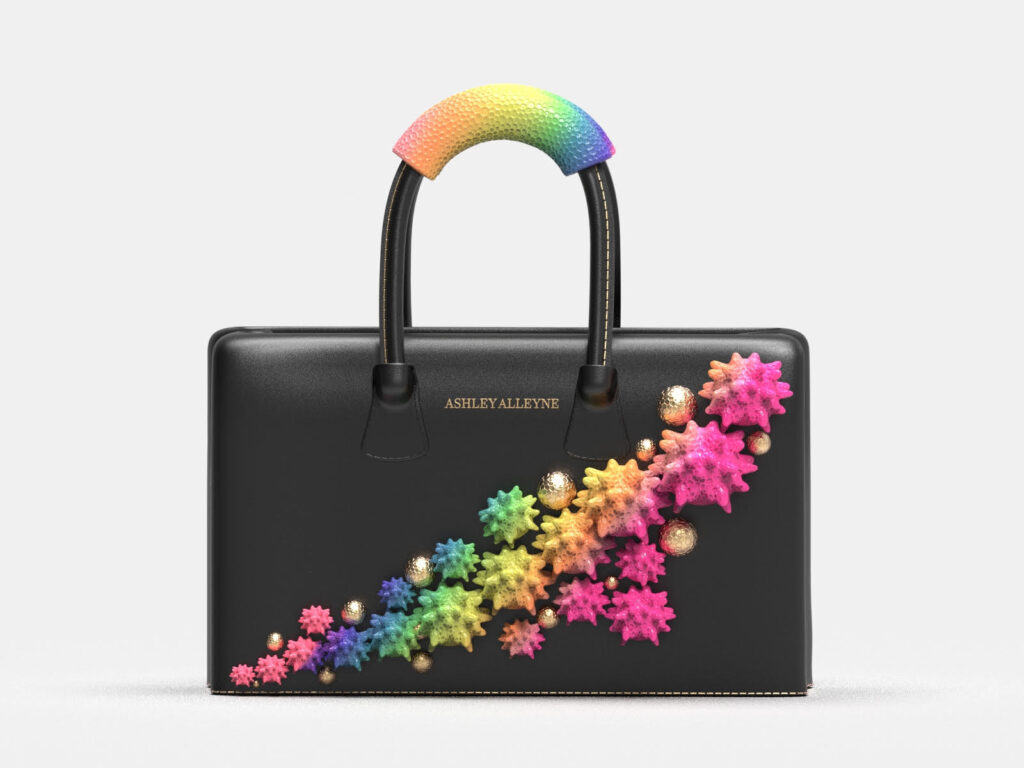
Final bag design and render courtesy of Ashley Alleyne.
Directly Collaborating with Stratasys Direct
While working with Stratasys itself was a dream come true, actually collaborating with them went like a dream. Whenever I needed help with the bag, or had a question, I was always able to hop on a call with them, go over 3D printing tolerances, etc. In no time, I had the bag directly sent to me. Again, I almost cried while holding it.
- Photos Courtesy of Stratasys Direct
- Photos Courtesy of Stratasys Direct
- Photography by Ashley Alleyne. Taken at Shine Portrait Studio.
Enter the Pandemic
Now, I know what you’re thinking, “Wow Ashley, that’s such a touching story. I almost shed a tear. But what the hell does that have to do with alleviating the leather crisis in the fashion industry?”
Great, I’d thought you’d never ask.
When I first started my 3D printing career years ago, 3D and 3D printing were frowned upon, and many fashion brands were completely against it, in contrast to now. Many workers and fashion designers were scared of incorporating the technology due to potentially losing jobs, not understanding the need or why, or due to an inability to see past their designs on a computer and not in their hands. It was a constant battle to have large corporations incorporate 3D into their workflow, and there were so many countless reasons spewed not to onboard it.
Then, the pandemic hit and changed the trajectory of fashion brands forever.
As we all know, live amid the pandemic was tumultuous. And it slapped the fashion industry hard. When COVID-19 first emerged, most fashion houses either a) allowed employees work remotely, b) laid off staff, or c) both. Many brands could not successfully develop new or current handbags or samples physically anymore due to the shutdown of factories overseas where they were made. Everyone in different departments, from designers to product development, everyone was scrambling to figure out how the hell to get their handbags made.
The rise of the metaverse began around the same time. This was extremely appealing to fashion companies, many of which saw it as a cash-generating opportunity. Suddenly, people didn’t imagine 3D visualization and printing as unnerving technologies. Instead, they were viewed as huge possibilities that could alleviate the handbag sampling production nightmare the pandemic created.
Suddenly, every fashion brand was very publicly racing one another to onboard 3D visualisation and 3D printing into their workflows. However, no one really knew what to do, how to do it, or what programs to specifically begin using. Experts with some form of background in 3D tools were being hired left and right.
And suddenly handbags were being created and rapid prototyped in 3D software instead of with physical samples.
Difficulties Incorporating 3D Printing into Fashion
However, not every company has incorporated 3D visualization and 3D printing into their workflows. Many fashion brands are still making handbags in the traditional way, creating multiple leather samples to get to the final product.
And, unfortunately, if a company is not doing 3D in some capacity, it might be viewed as being behind or unsustainable. Now, 3D visualization and 3D printing seem like saviors for the industry, right? No. Not necessarily for everyone.
Take, for example, traditional designers who have worked for large brands for 30+ years. It can be extremely confusing for these experts, who have crafted products the same way for their whole careers and held their designs physically in their hands, to now only see it on a computer in 3D. In fact, some have been forced to learn how to design in 3D, which is particularly difficult for those who don’t have a background in the technology.
On top of that, even if you are solely designing in 3D, a fashion product may not look the same as the end result. The actual leather might feel completely different than anticipated when the final product comes out.
What Stratasys 3D Printing Can do for Fashion
By 3D printing handbags during the sampling and prototyping process using Stratasys PolyJet’s “leather” material, fashion brands can:
- 3D print and rapid prototype their designs without using actual leather. This way designers can physically hold their designs to assess features like the length of a strap or a handle, size, shape, etc., without wasting the end material.
- Modify files in 3D software without creating multiple physical prototypes made from leather. This allows a company to do everything in-house with a Stratasys printer, or by relying on a third party like Stratasys Direct, if the budget doesn’t allow for acquiring a printer.
- Cut their carbon footprint eliminating the need to import samples from overseas, while also reducing time to market.
Now, I know you might be thinking: would this reduce jobs for people in sampling? No, not necessarily. 3D printing “leather” handbags don’t have to be the end-all-be-all of the handbag sampling process. 3D printing these bags in the earlier stages of prototyping can alleviate the amount of leather that gets wasted in the sampling process before a traditional leather sample is made.
Lastly, I would personally like to thank Stratasys Direct, my family and friends, Iain Kerr, 3DPrint.com, Express Newark, and everyone who has helped support and execute this project.
It’s the first of hopefully many collaborations with Stratasys. I can’t recommend them enough. Feel free to reach out to me and Stratasys Direct if you are a fashion brand or someone interested in onboarding 3D visualization and 3D printing into your workflow. The bag is on display at Booth 5012 at Rapid + TCT in Chicago.
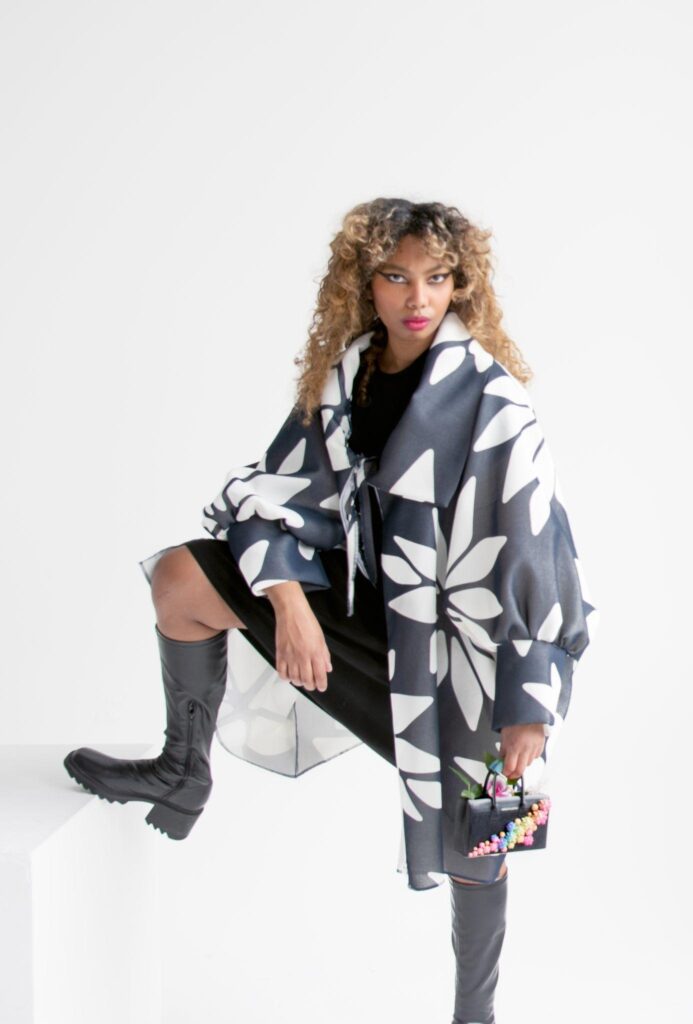
Photography by Ashley Alleyne. Taken at Shine Portrait Studio.
And on a last note, just remember, if one door closes, another door might open something even better.
Subscribe to Our Email Newsletter
Stay up-to-date on all the latest news from the 3D printing industry and receive information and offers from third party vendors.
You May Also Like
Gorilla Sports GE’s First 3D Printed Titanium Cast
How do you help a gorilla with a broken arm? Sounds like the start of a bad joke a zookeeper might tell, but it’s an actual dilemma recently faced by...
Nylon 3D Printed Parts Made More Functional with Coatings & Colors
Parts 3D printed from polyamide (PA, Nylon) 12 using powder bed fusion (PBF) are a mainstay in the additive manufacturing (AM) industry. While post-finishing processes have improved the porosity of...
$25M to Back Sintavia’s Largest Expansion of Metal 3D Printing Capacity Since 2019
Sintavia, the digital manufacturing company specializing in mission-critical parts for strategic sectors, announced a $25 million investment to increase its production capacity, the largest expansion to its operations since 2019....
Velo3D Initiates Public Offering in a Bid to Strengthen Financial Foundations and Drive Future Growth
Velo3D (NYSE: VLD) has been among a number of publicly traded 3D printing firms that have attempted to weather the current macroeconomic climate. After posting a challenging financial report for 2023,...


